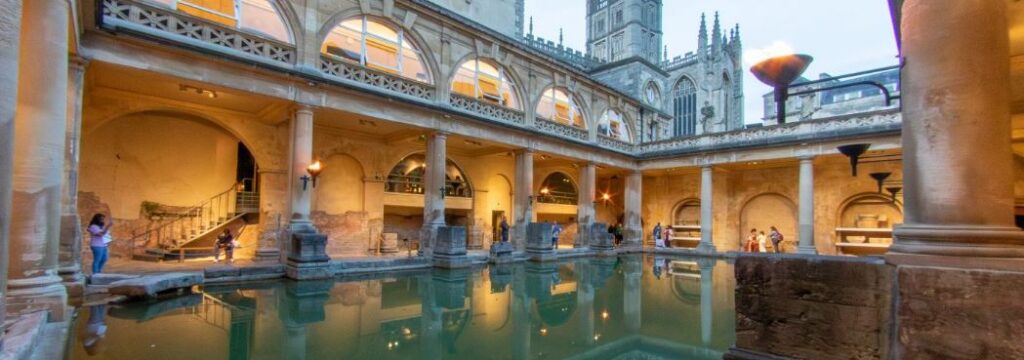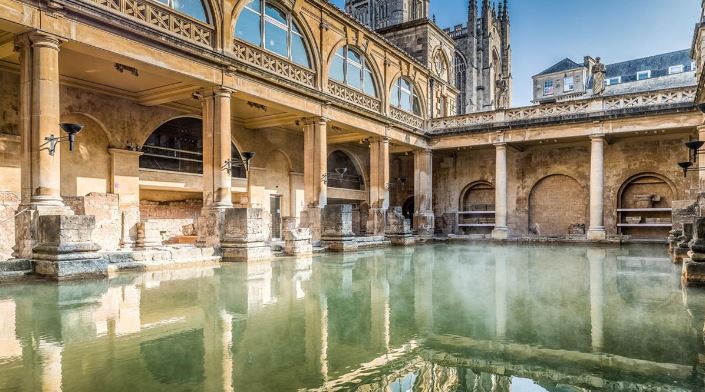
At the point when you consider the antiquated world, the loftiness of the Roman Baths is frequently at the front of authentic engineering. These great designs were not simply puts for washing. Discovering the Secrets of Roman Baths.
They were social centers, social focuses, and innovative wonders. In this article, we’ll investigate a few charming realities about Roman Baths, their importance in old Roman culture, and what they uncover about day to day existence during that period.
What Were Roman Baths?
The Roman Baths, or thermae, were intricate public washing offices in antiquated Rome. They assumed a critical part in Roman culture, offering residents a spot to scrub themselves, mingle, and unwind. Most urban areas across the Roman Realm included these showers, frequently joined by rec centers, nurseries, and libraries, making them a crucial piece of metropolitan life.
A Brief History of Roman Baths
The idea of collective washing traces all the way back to antiquated Greece, yet it was the Romans who consummated it. The earliest Roman Baths showed up around 312 BCE, and their notoriety flooded during the rule of Sovereign Augustus. By the fourth century CE, the Romans had grown huge buildings that included different pools, steam rooms, and exercise regions.
Architectural Wonders
1. Innovative Engineering
Roman Baths are wonders of designing. The utilization of reservoir conduits considered a steady stockpile of new water, fundamental for the working of these immense edifices. The hypocaust framework, which gave underfloor warming, is another shrewd component that kept the showers warm and agreeable.
2. Stunning Designs
The engineering of Roman Baths fluctuated fundamentally founded on the spot and accessible assets, yet they frequently included unpredictable mosaics, fantastic sections, and perfectly planned roofs. One of the most popular models is the Showers of Caracalla in Rome, which could oblige up to 1,600 bathers all at once.
Social and Cultural Significance
3. A Social Hub
Past cleanliness, Roman Baths filled in as imperative social spaces. They were places for unwinding, conferences, and, surprisingly, political conversations. Romans of all friendly classes regularly visited these showers, advancing a feeling of local area and shared culture.
4. Health and Wellness
Romans had faith in the medical advantages of washing. They rehearsed a standard that included hot showers, cold dives, and back rubs. This all encompassing way to deal with wellbeing highlighted the significance of individual consideration in Roman culture.
Daily Life in Roman Baths
5. Bathing Rituals
The washing experience was organized and formal. It normally started in the apodyterium, or evolving room, where bathers would strip down and store their assets. They would then advance through a progression of rooms: the tepidarium (warm room), caldarium (hot room), lastly the frigidarium (cold room). Each step had its motivation, advancing unwinding and restoration.
6. Entertainment and Amenities
Roman Baths were not exclusively about washing; they frequently included libraries, gardens, and even shops. Bathers could appreciate sports, pay attention to music, or take part in discussions while enjoying recreation exercises. This multi-layered experience made showers a focal piece of day to day existence.
Fun Facts About Roman Baths
7. Size and Scale
The Showers of Diocletian in Rome are the biggest at any point assembled, covering more than 13 hectares (32 sections of land). They could oblige in excess of 3,000 bathers immediately, displaying the glory of Roman designing and the social significance of showers.
8. Art and Culture
Mosaics and figures decorated the walls and floors of Roman Baths, frequently portraying fanciful scenes or significant occasions. This accentuation on workmanship mirrors the Romans’ appreciation for magnificence and culture in day to day existence.
9. Decline of the Baths
With the fall of the Roman Domain, numerous Roman Baths fell into dilapidation and were reused or deserted. The ascent of Christianity likewise assumed a part, as the congregation saw public washing as a wicked guilty pleasure.
Visiting Roman Baths Today
Numerous old Roman Baths have been saved and can be visited today, offering a brief look into this interesting part of Roman life. For instance, the Showers of Caracalla in Rome are available to general society, giving a remarkable encounter of old designing and culture. Visit the Showers of Caracalla.

Conclusion
The tradition of Roman Baths perseveres, uncovering much about the social, social, and mechanical headways of the old Romans. Their many-sided plan, social importance, and job in advancing wellbeing and health give significant bits of knowledge into life in old Rome.
Whether you’re a set of experiences buff or only inquisitive about old civic establishments, investigating the universe of Roman Baths is an excursion worth taking. Discovering the Secrets of Roman Baths.
External Resources
By understanding the rich history and meaning of Roman Baths, we can see the value in their job in forming the Roman Domain, yet in addition the groundworks of current public washing and health rehearses.
Plunge further into this entrancing theme on my blog, “Antiquated Roman Baths Realities,” and uncover more insider facts of this astounding old human advancement
